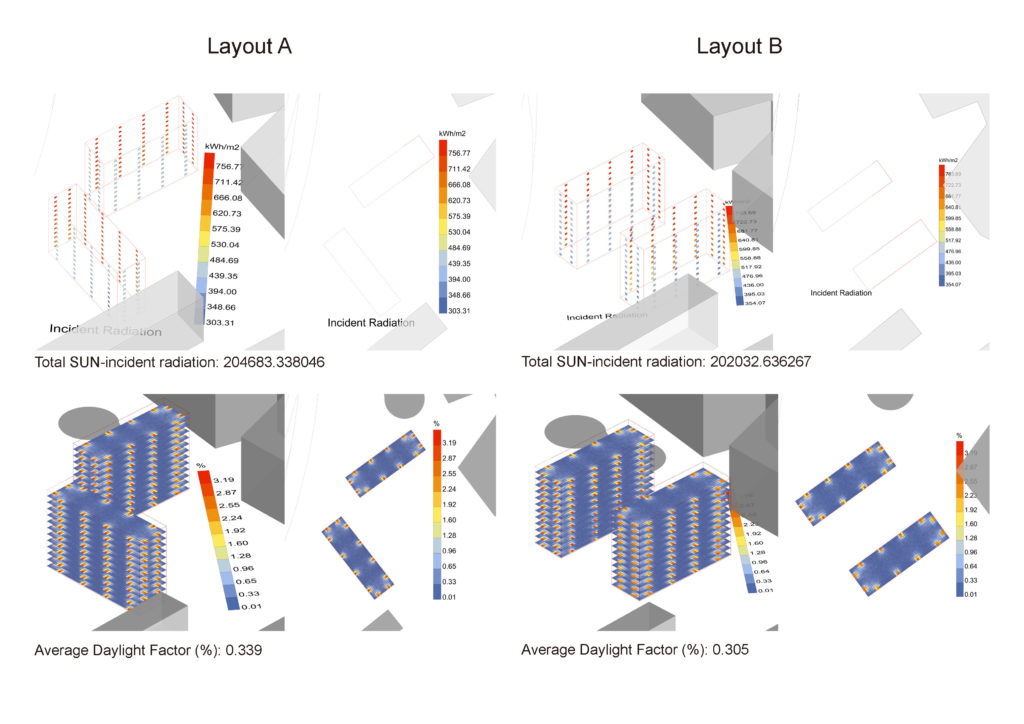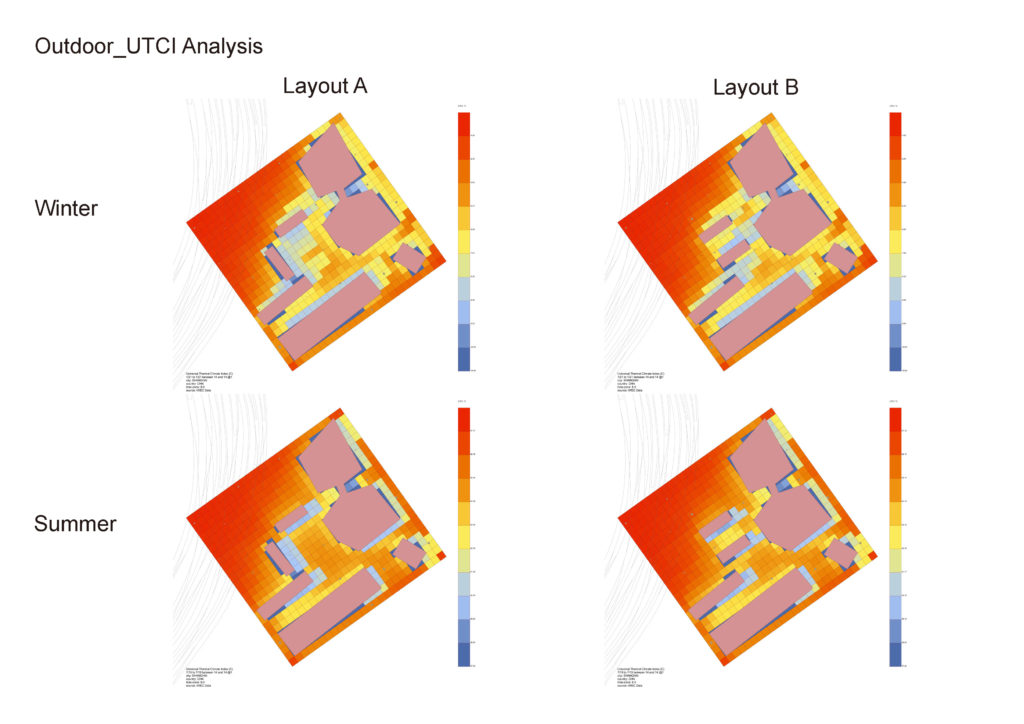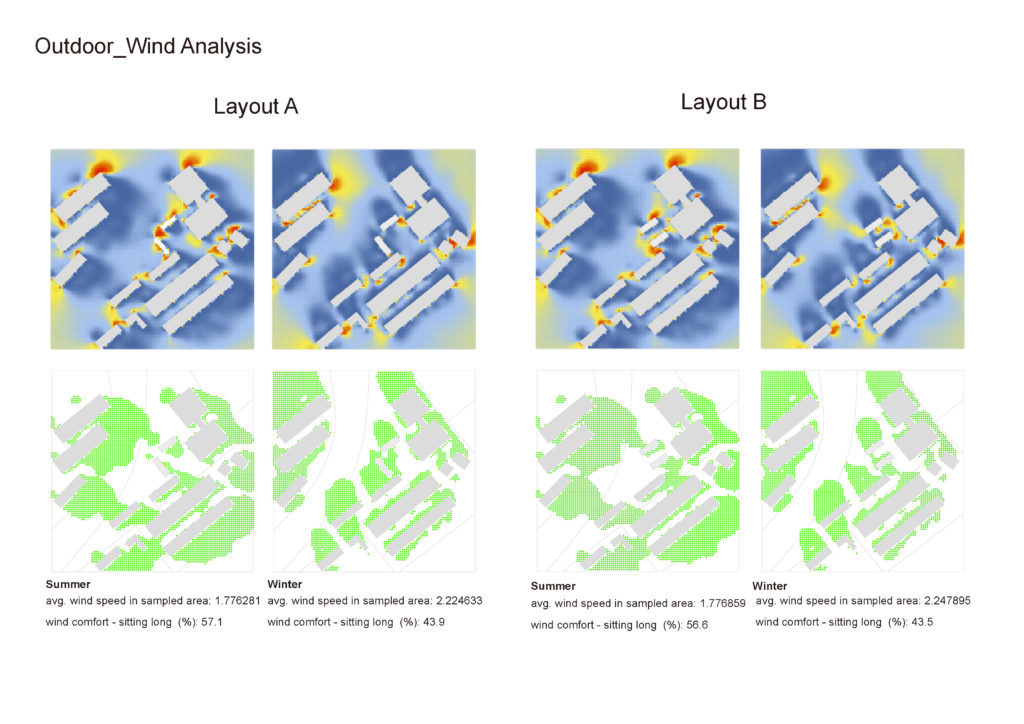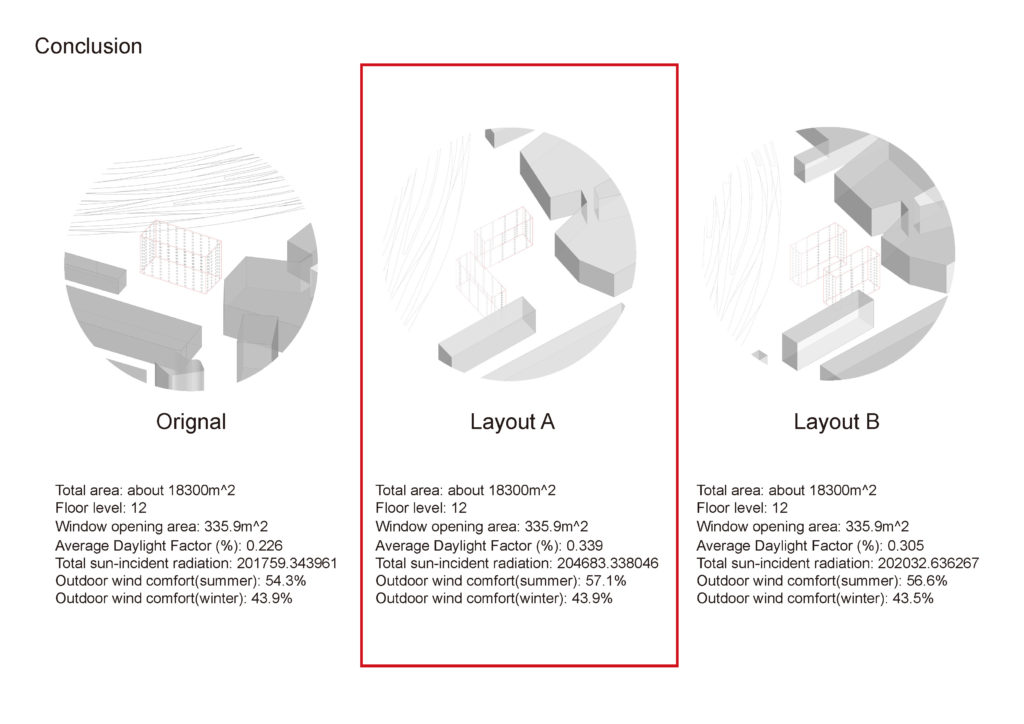The project is located in Shanghai, China.
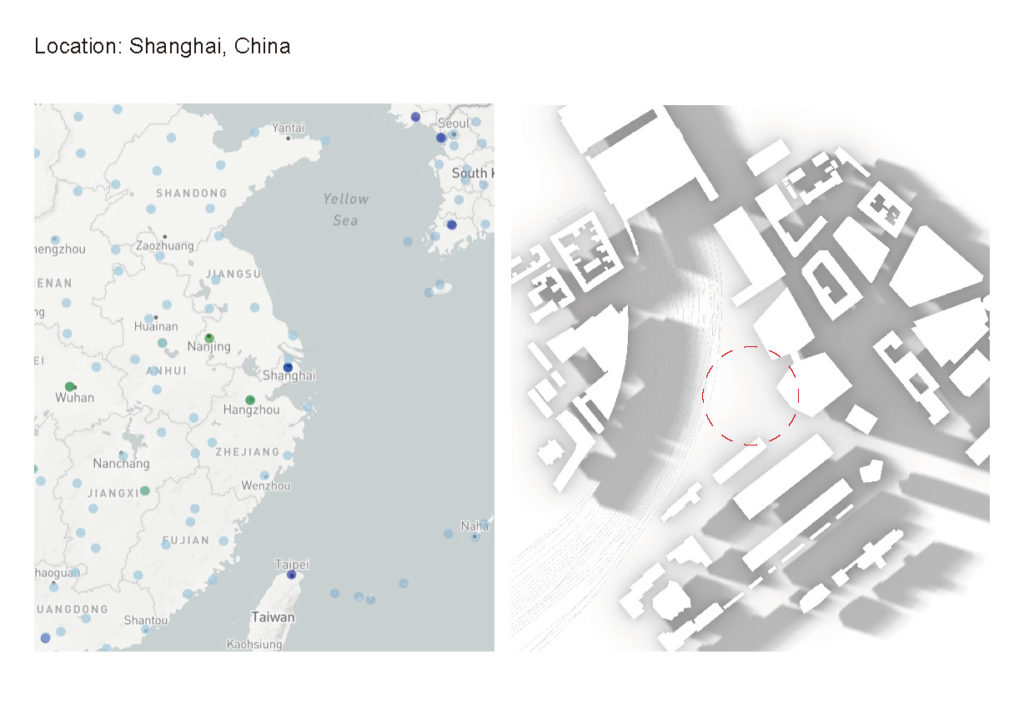
The first is the basic climate analysis of Shanghai. The warmest month in Shanghai are 06,07,08, the coldest three months are 12,01,02. According to the UTCI comfort analysis, the outdoor environment is relatively uncomfortable in summer and winter.
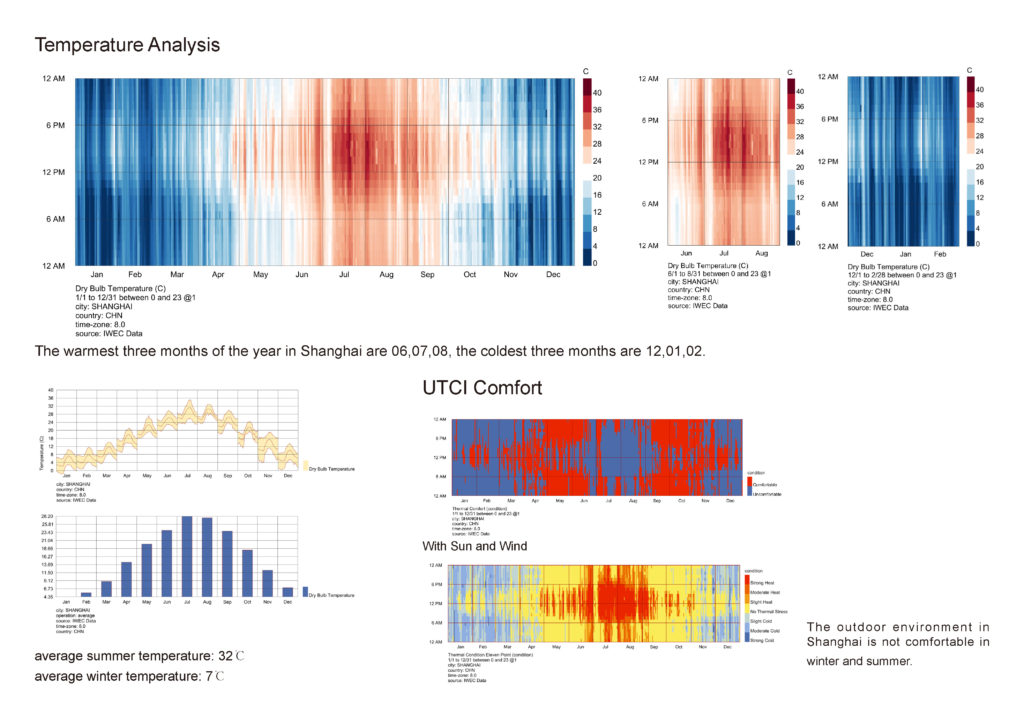
According to the analysis of the wind environment, wind direction is southeast in summer, and northwest in winter. From the analysis of UTCI outdoor comfort. It can be seen that the site is less shaded which means the winter is cold and the summer is hot in this area.
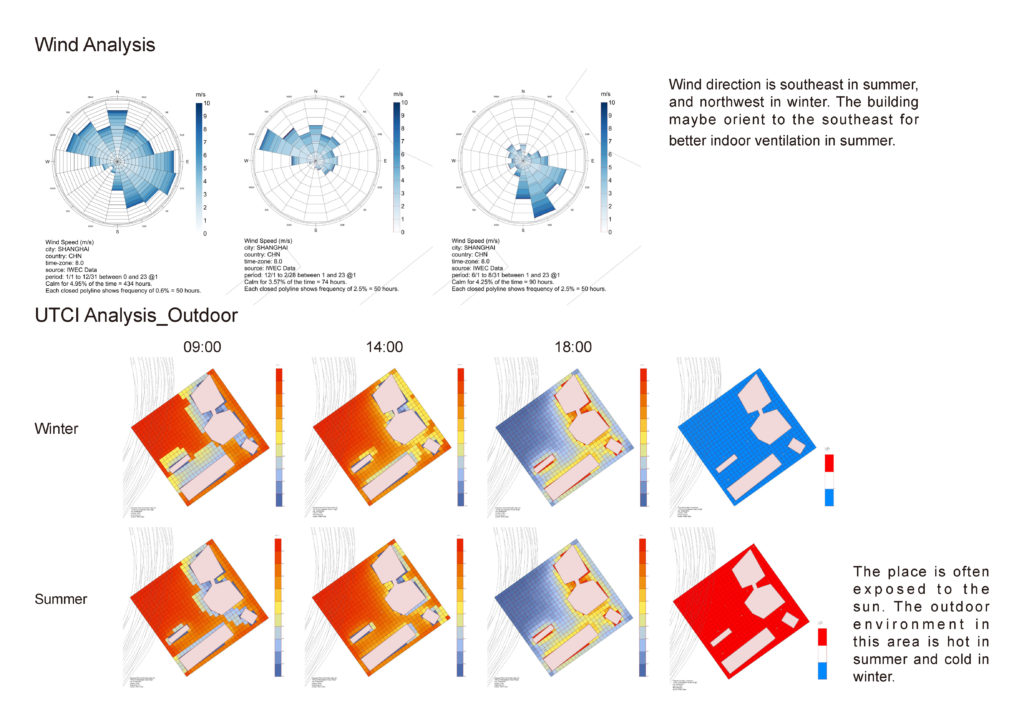
In this exercise we develop a building mass that already has basic parameters as a primitive strategy. The best orientation was found by rotating the building volume and analyzing the total solar radiation.
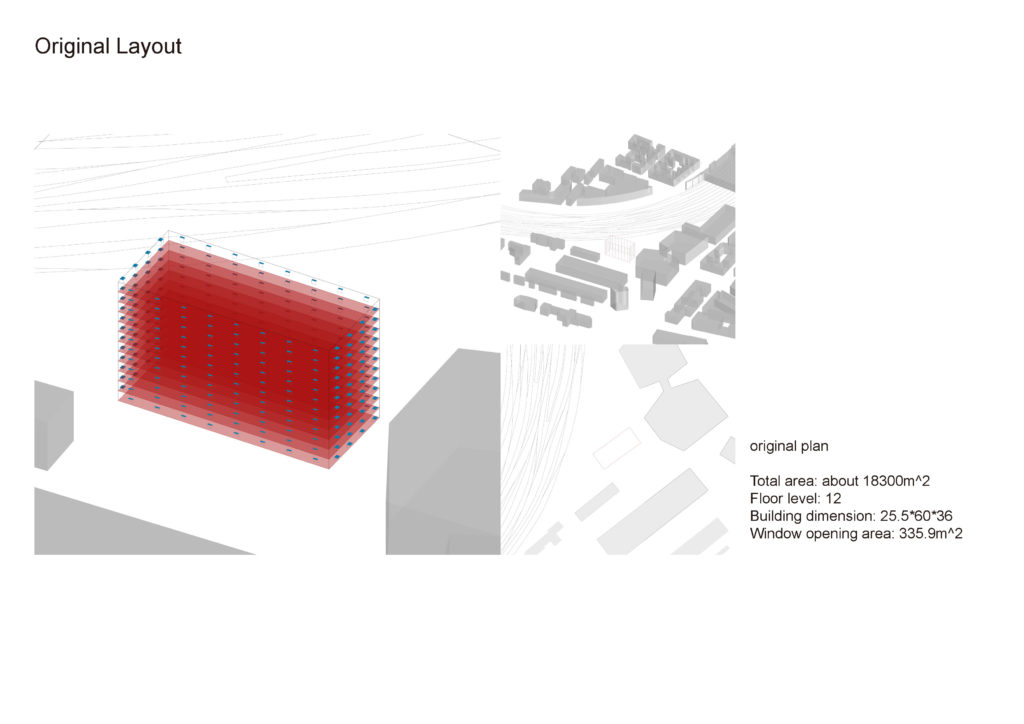
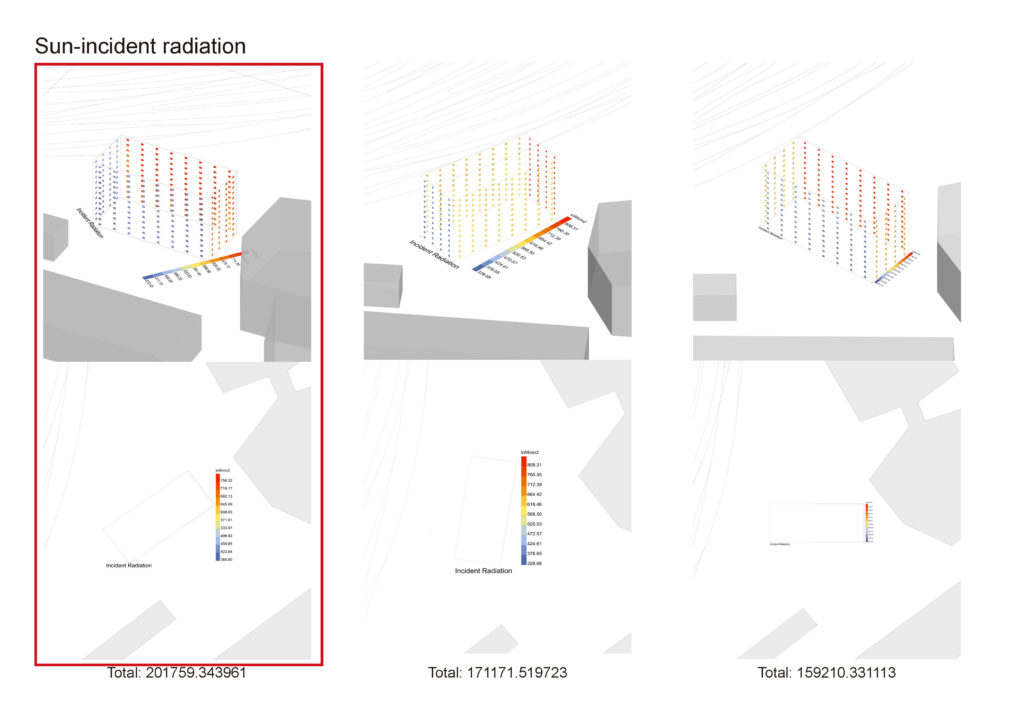
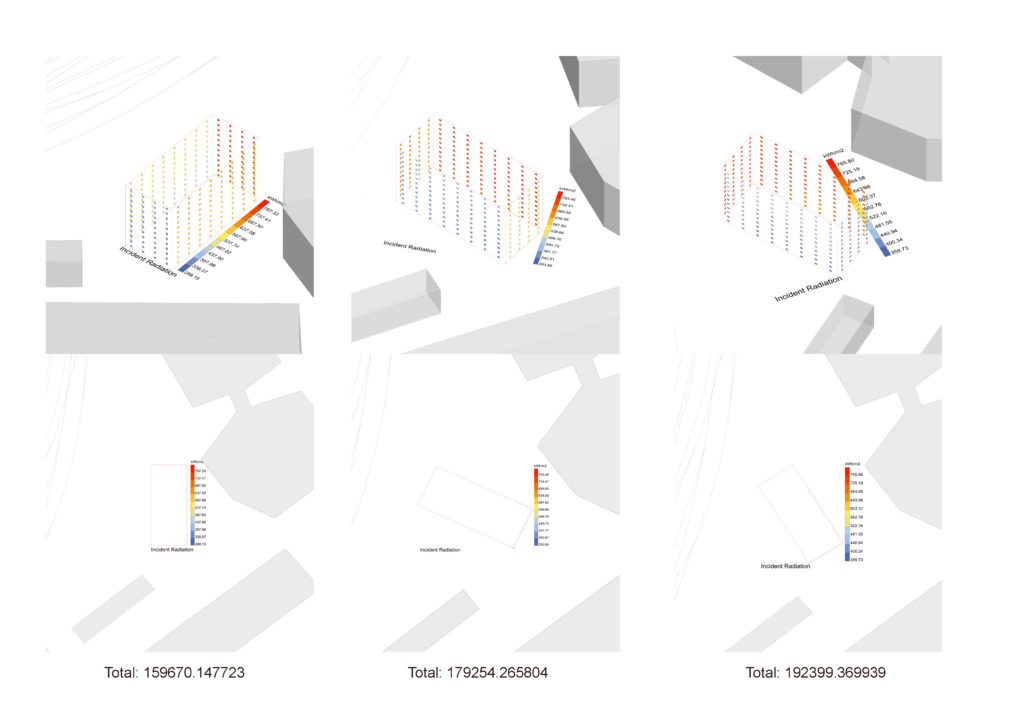
In the next step, based on the volume with the best orientation, we further analyzed the amount of sun-incident radiation and direct sun hours on each of its facades, and the result about the average daylight factor for this layout.
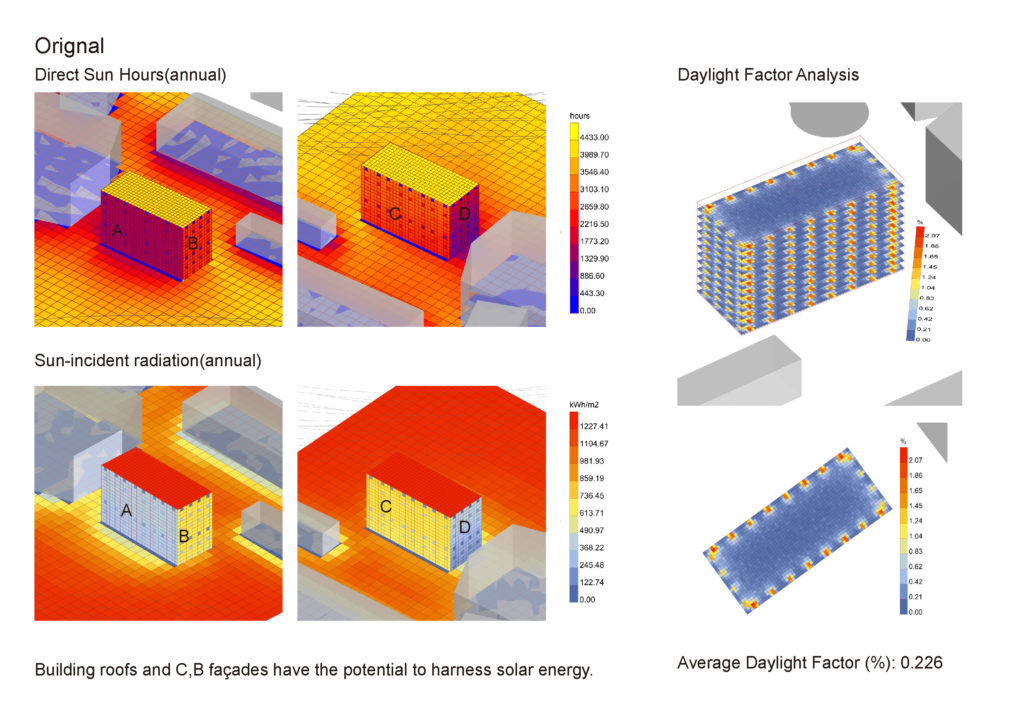
The impact of this layout on the outdoor environment can also be seen intuitively through the UTCI and wind analysis. The outdoor environment around the building will be more comfortable, but the boundary of the building is prone to form a Venturi effect.

Then, in order to better improve the outdoor environment, we split the building volume into two without changing the parameters of the building, and tried to analyze and compare them to select a better solution.
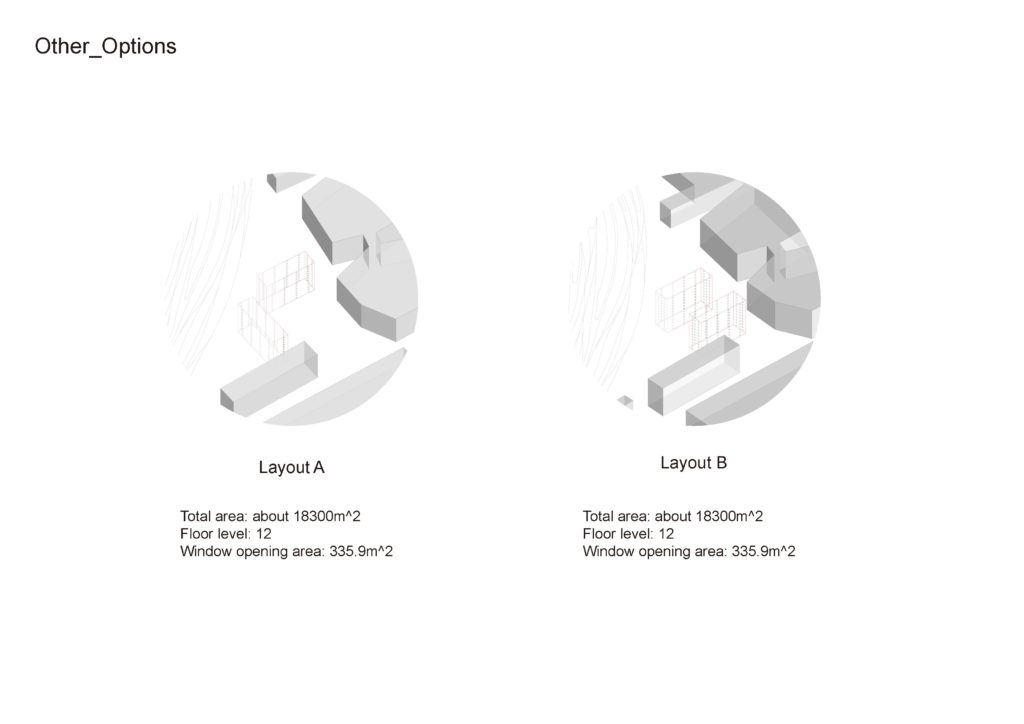
We compare total sun-incident radiation, average daylight factor, UTCI outdoor comfort, and outdoor wind environment. Finally we can conclude that plan A is better than the other two plans in terms of various indicators.
